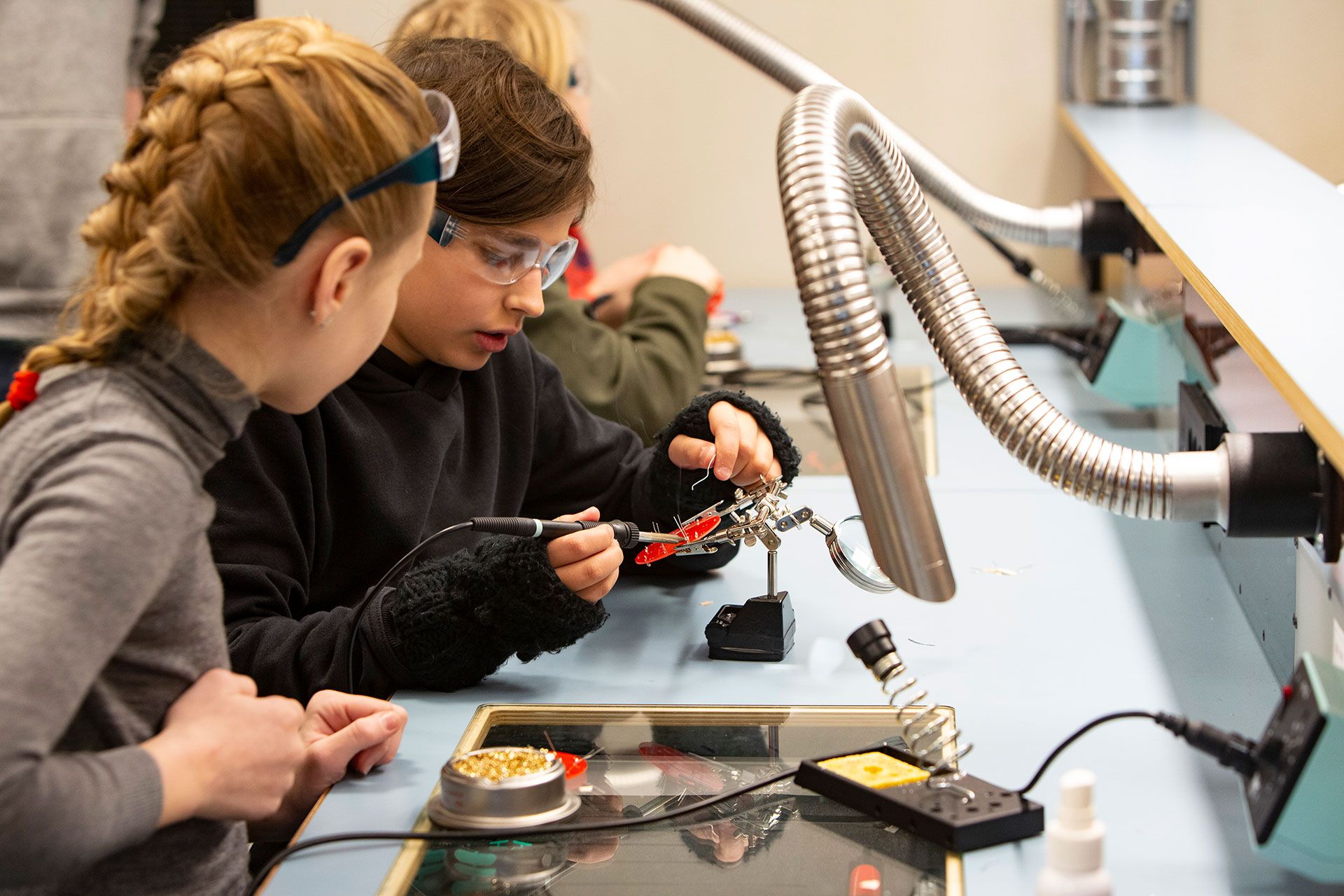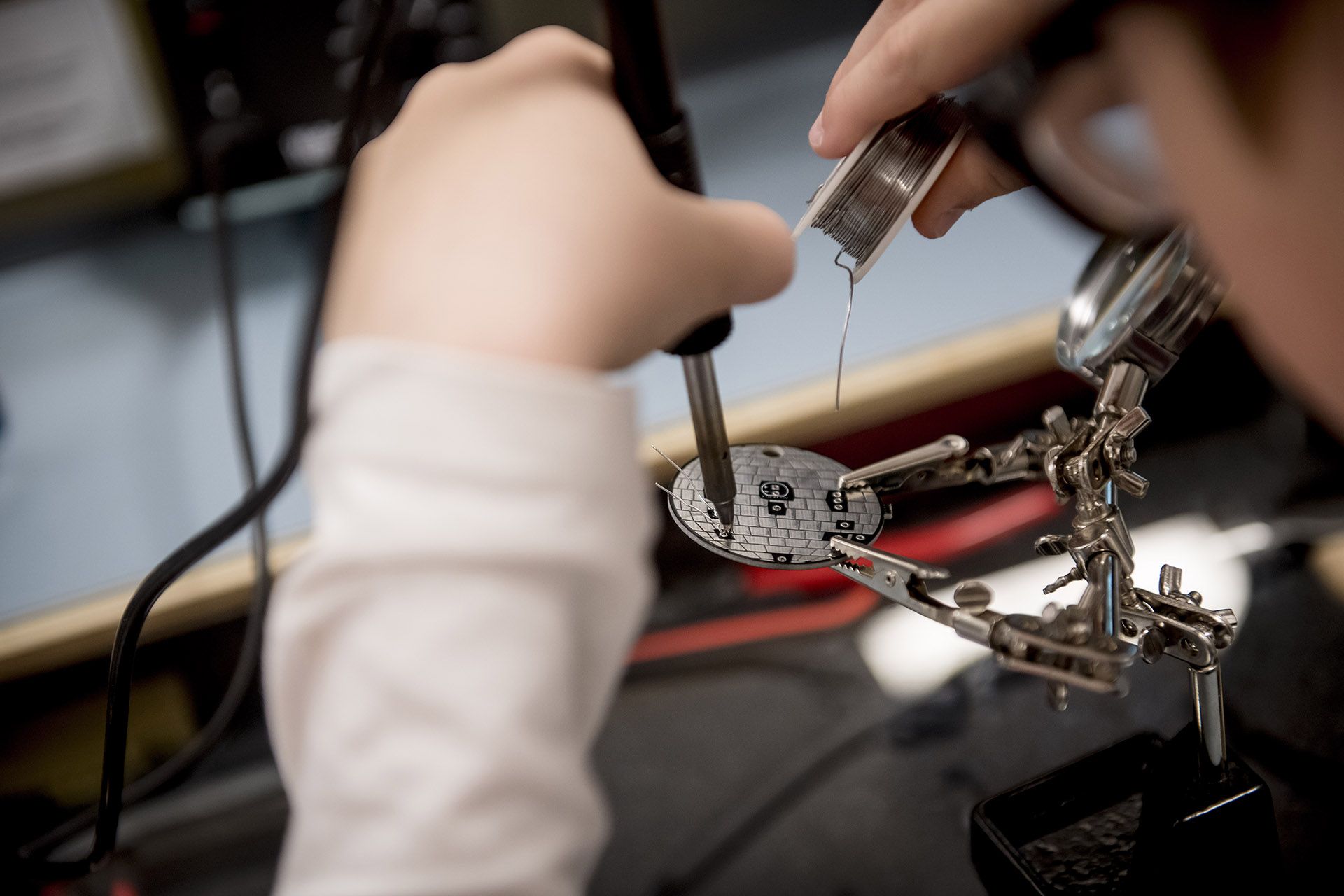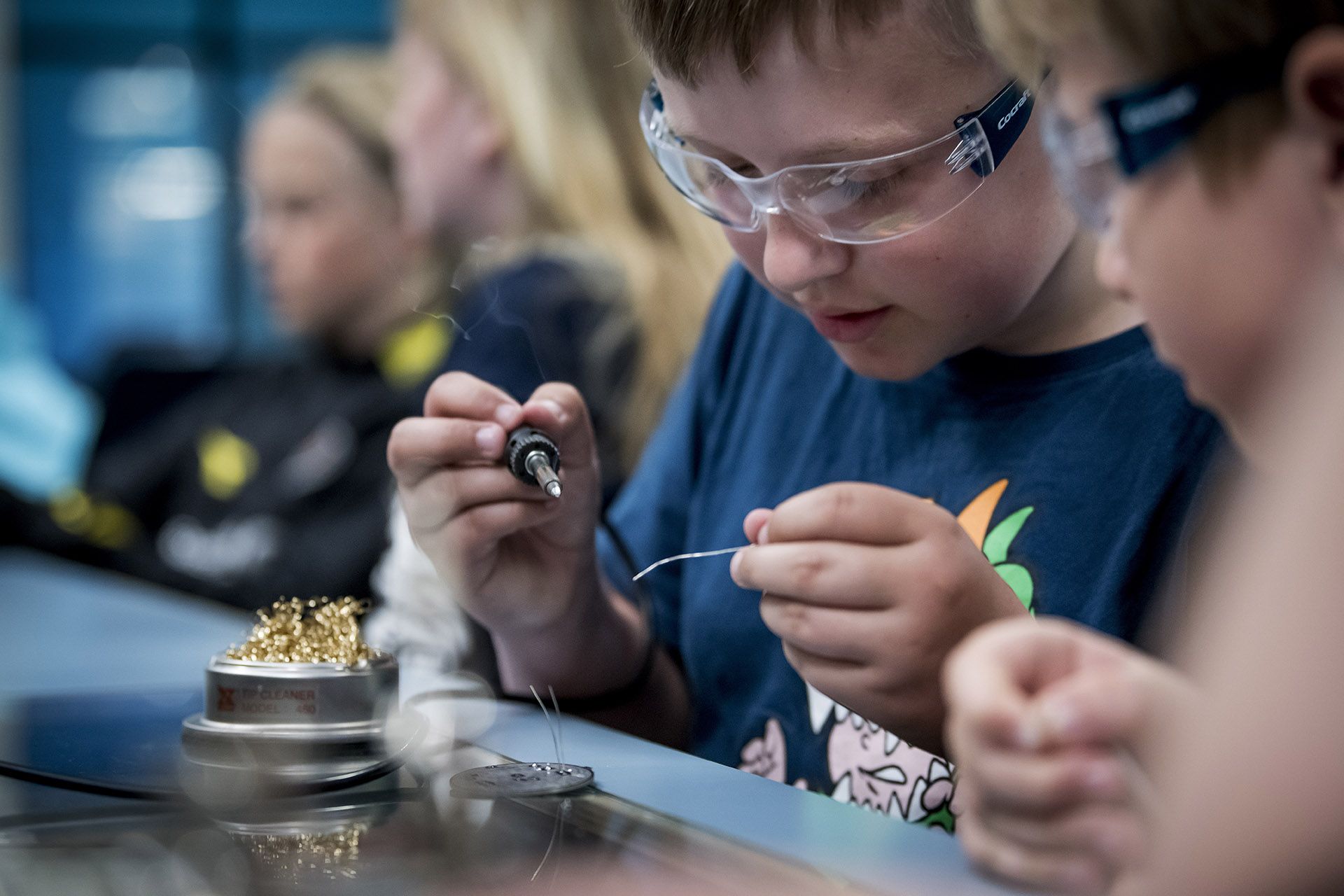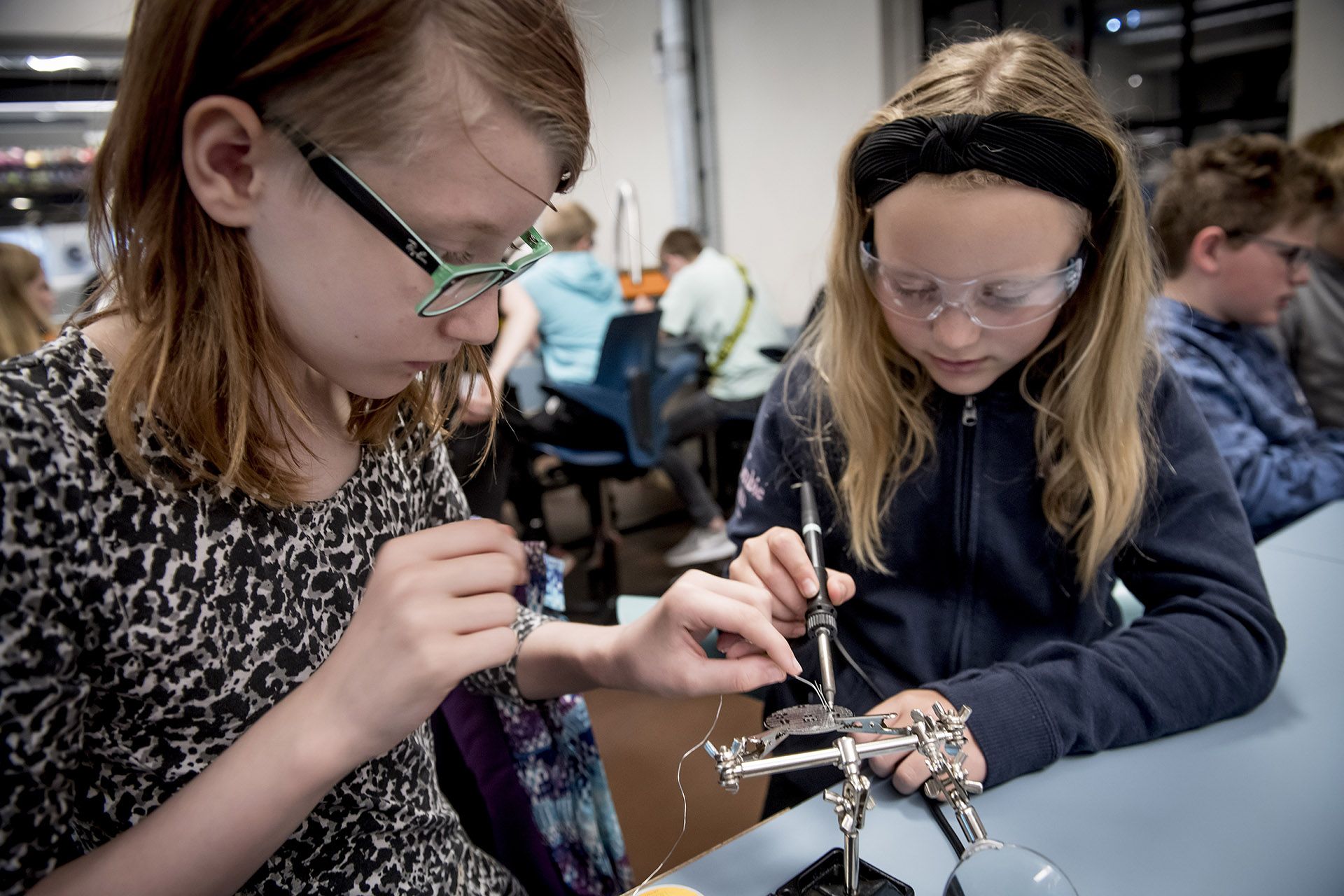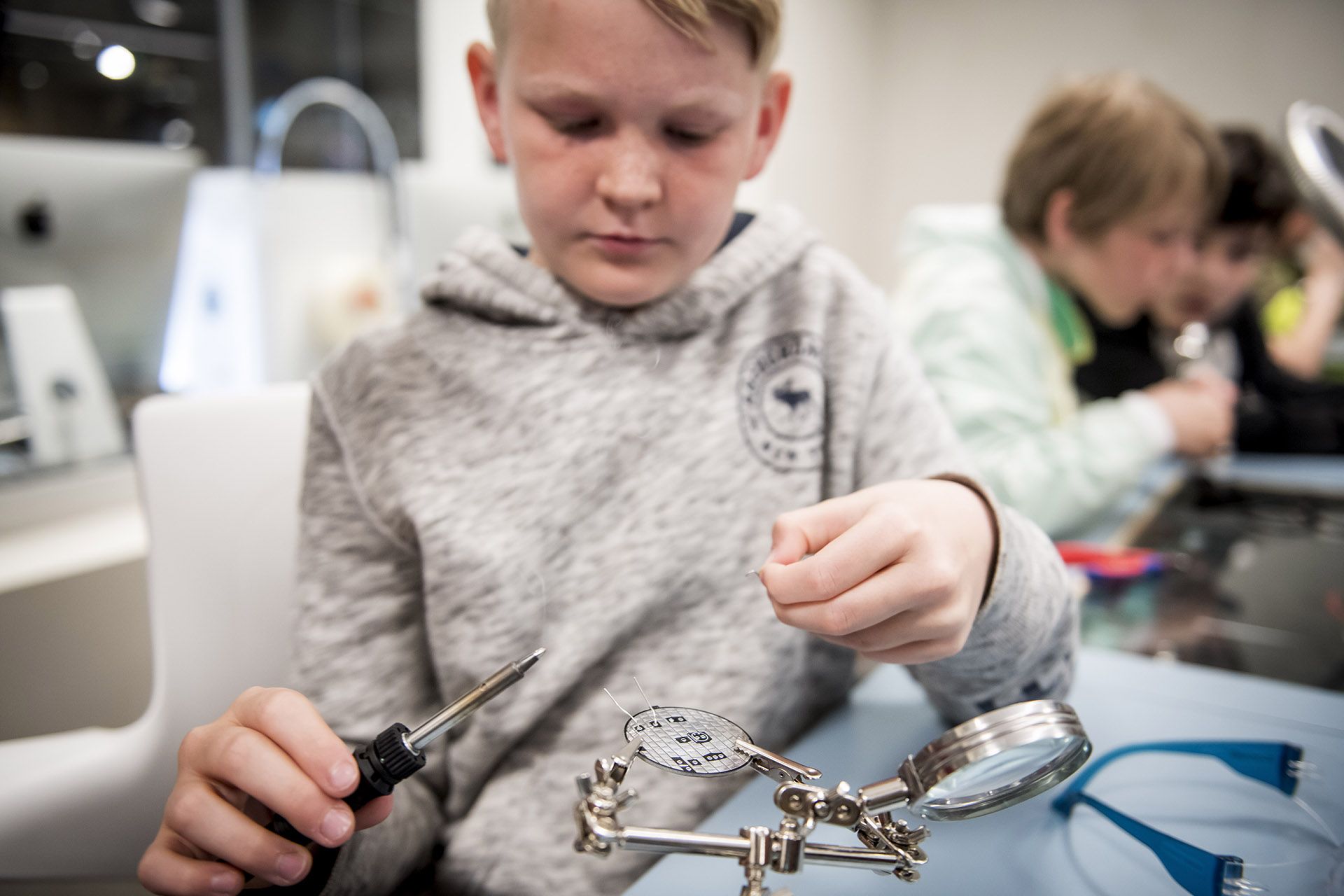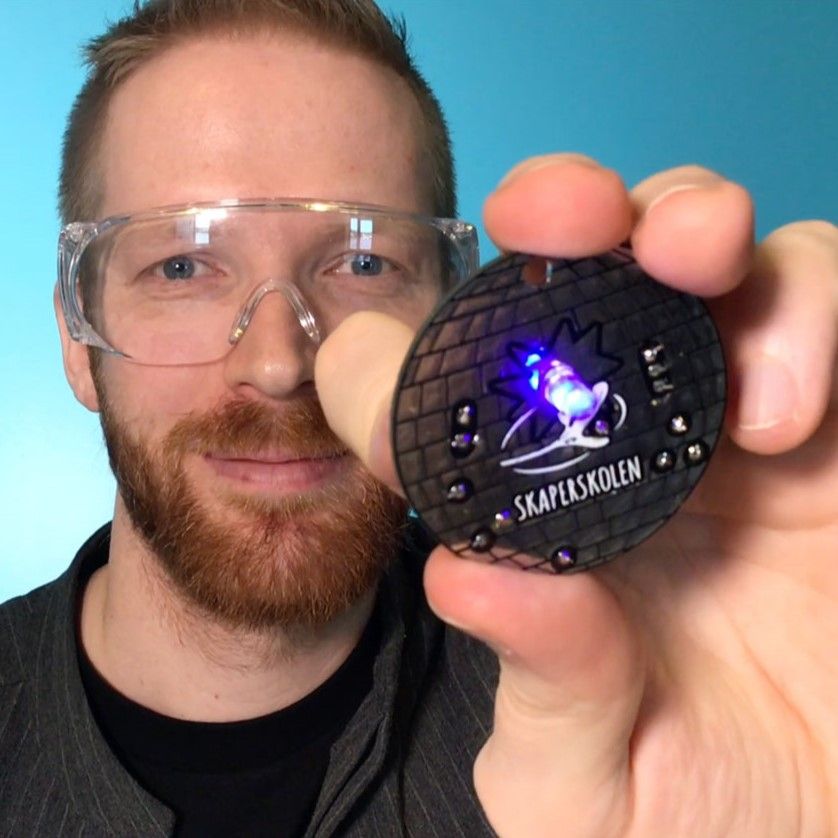Science
Soldering of a disco ball
- Home
- School and kindergarten
- 5–7 step and 8.–10. steps
- Soldering of a disco ball
Get a basic introduction to electronics and how various components have changed the world.
Students will learn to solder components to a circuit board and make a disco ball that changes color and turns on when it gets dark. They get the disco kula home with them.
NB! Show up no later than 10 minutes before the lesson. Failure to attend without cancellation 7 days in advance will result in a NOK 500 fee.
What happens in this teaching program?
Curriculum and competence targets | Science (competency target after 7th grade):
Science (competency target after 10th grade):
|
Description of the lesson | Introduction (10min)
Activity (45 min)
Closing (5 min)
|
Practical information | The teacher's role We want you as an adult to be active, participating and curious. Teachers are responsible for the group throughout the visit and may be asked to help along the way. Explainer is responsible for implementing the program. Before the visit Our teaching plans do not require preparatory work, but it is always useful to prepare students for a museum visit. Feel free to show pictures or video from the museum, tell us about what will happen, and see our digital resources that can be used for pre- and post-work. After the visit Make your own yogurt ice cream with this simple recipe! Reflect and discuss with the students after the lesson, preferably in groups. |
You meet one of us!

John

Øystein

Thea

Linda

Sigurd

Terry
Common questions and answers
One of the teachers in the group approaches the reception. We will then register that you have arrived and you will be allocated a cloakroom space and possibly cabinet for locking up valuables.
Arrive at the museum no later than 10 minutes before the start of the program. Let us know if you will be delayed by phone. 22 79 60 00. If you arrive late, the learning offer may be shortened or cancelled.
Our teaching programs are free, but you have to pay for the entrance ticket to the museum. You can only book one arrangement per visit.
Separate prices apply to teachers, pupils and school classes.
Kindergartens and schools can pay by cash/card on arrival or receive an invoice. For invoices, you must include the requisition or resource number and invoice address.
Yes! Access to the museum's exhibitions is included in the ticket for school visits. You are most welcome to explore the exhibitions both before and after the lessons.
You can eat the packed lunch in different places; in the cafe, at the reception and outside the museum entrance. It is not allowed to eat or drink in the exhibitions.
At The Norwegian Museum of Science and Technology the same rules apply as at school/kindergarten. We will
- be role models for each other
- be kind to each other and the exhibits
- use consensus
- don't run.
ATTENTION: Everything behind barriers must not be touched.
Then we all have fun and contribute to a good learning experience. If you decide that your group can visit the museum shop, the teacher must be present as long as some of the children are there.
Resources
Below you will find various resources that can help prepare students for a museum visit.
Intro video
Electronics are everywhere! All electronic gadgets consist of small parts (components) that are connected together using tiny wires that are soldered together. Soldering means fusing two metals together and this must be done so that the electrons can be connected together in electronic circuits.
At The Norwegian Museum of Science and Technology students will be making a disco ball that they will solder together. Show the students this video so they know what will happen.
-f2e53c96.jpeg)
Finishing work
Make a list of the electronic gadgets you find in the classroom. The students are given 3 minutes to write down everything they see around them. Everything must be included, from mobile phone, projector, light switch, thermostat etc...
- How many different things do you have on the list?
- Who managed to make the longest list?
